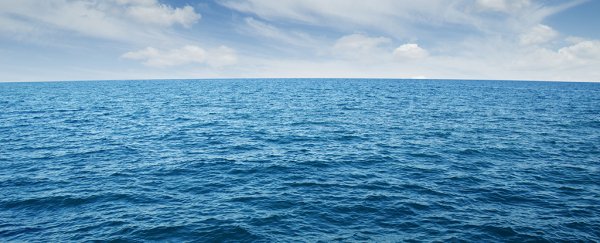Pulling uranium out of seawater could be a cost-effective way to source nuclear fuel, scientists have found, and the technique could pave the way for coastal countries to switch to nuclear power.
With the International Atomic Energy Agency currently predicting an increase of up to 68 percent in nuclear power production over the next 15 years, finding a new, more environmentally friendly source of uranium - the most critical ingredient in nuclear power - could give this alternative to fossil fuels a boost.
Researchers from Stanford University in California have found a way to more efficiently extract the uranium dissolved in our oceans, which could one day help nations with plenty of ocean-front land and no uranium collect fuel for nuclear energy.
In the form of the isotope U-235, uranium is currently the radioactive element of choice when it comes to using nuclear energy to produce electricity.
Right now, about 450 nuclear power plants spread across 30 countries chew through more than 60,000 tonnes of the stuff each year.
As an element, uranium is about as common as tin, being found in most rocks in a few parts per million. Getting your hands on enough to boil water for power, however, requires finding patches of it concentrated in Earth's crust - at least if you want it to be cost-effective.
For countries without vast deposits of uranium, going nuclear relies on importing the fuel from countries with significant reserves, such as Australia, Kazakhstan, Canada, and Russia.
Pulling it out of rocks can have a big impact on the environment, both as a result of digging a great big hole, and through the process of extracting the fuel from the surrounding waste material.
Because of that, finding another source for uranium that risks less damage to the environment would also make the power source more environmentally friendly.
And it turns out, the ocean contains an enormous amount of uranium that doesn't require digging - but the bad news is you need a lot of buckets of water to get even a small amount of the stuff.
"Concentrations are tiny, on the order of a single grain of salt dissolved in a litre of water," said team researcher Yi Cui from Stanford University. "But the oceans are so vast that if we can extract these trace amounts cost effectively, the supply would be endless."
"Endless" might be a small exaggeration, but the 4.5 billion tonnes of uranium dissolved in our planet's waters would see us through for at least a few millennia of energy, with any we remove being replenished as uranium in the surrounding rocks dissolves.
We have a lot of water to sift through – about 1.37 billion cubic kilometres, in fact, (that's more than 332 million cubic miles), with only about 3 particles of uranium per billion particles of seawater.
But uranium happens to form a positively charged ion in seawater as it reacts with oxygen to form the compound uranyl, providing a potentially easy way to selectively pull it out of solution.
One procedure uses a compound called amidoxime to pick up particles of uranyl while avoiding other positively charged particles.
By coating fibres in amidoxine, it's possible to sweep a brush through a current of seawater and pull it up once it has a layer of the uranium compound – then it's a matter of washing the brushes in a chemical bath to remove the uranyl, and sending it off for refining.
Being possible is one thing – being able to compete in a market where existing approaches are cheaper is another.
But in their new study, the Stanford researchers found several ways to improve the process, bringing it a step closer to becoming an economically viable industry.
Adding amoxidone to a pair of carbon electrodes, the scientists created a binding layer which could be hit with alternating pulses of low voltage electricity, allowing at least nine times the amount of uranyl to accumulate before saturation.
Using actual ocean water, the team was also able to collect three times as much uranyl in an 11-hour period, showing an improvement not just in the amount which could be collected in one sweep, but in the rate of collection.
Lastly, they showed this adjustment to the process tripled the lifespan of the amidoxine coating, reducing costs even further.
While it's an improvement on the existing technology, a lot more needs to be done before mining ocean water for uranium can compete with digging it out of the ground. The next step would be to reduce the voltage required to be fed into the process.
Of course, there is still the question of whether nuclear is the way to go at all; while it's a carbon-free alternative to fossil fuels, anxiety over the risk of nuclear accidents, access to raw nuclear material, and the need to safely and responsibly dispose of spent fuel remains high.
"For much of this century, some fraction of our electricity will need to come from sources that we can turn on and off," says researcher Stephen Chu.
"I believe nuclear power should be part of that mix, and assuring access to uranium is part of the solution to carbon-free energy."
One thing is for certain – nuclear energy isn't going away any time soon, so finding cheaper, less risky ways to supply the fuel can only be a good thing.
This research was published in Nature Energy.
